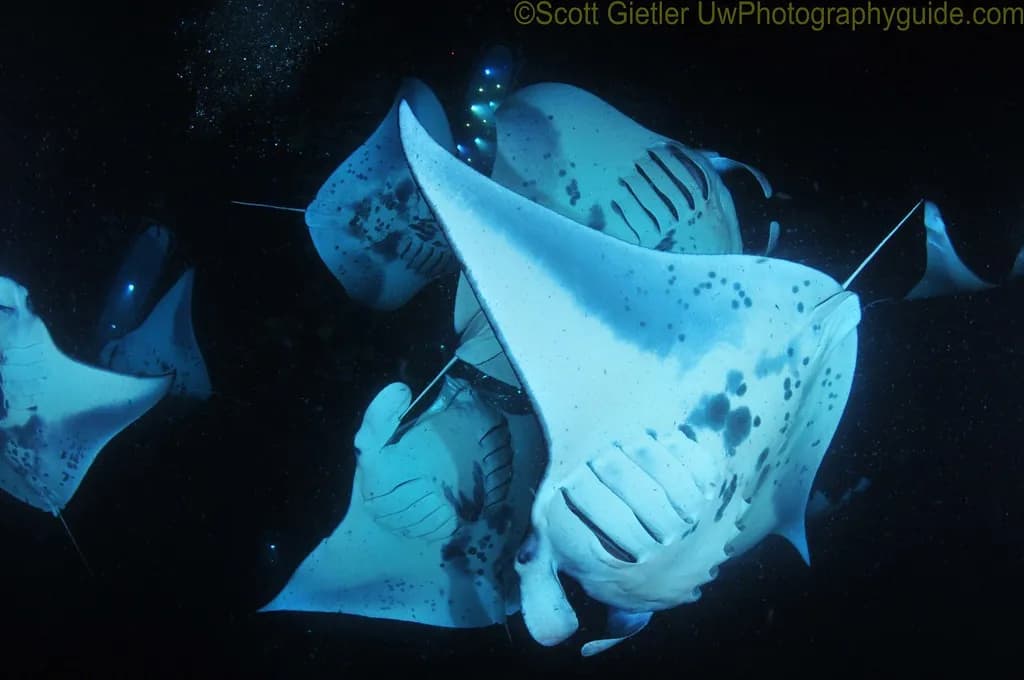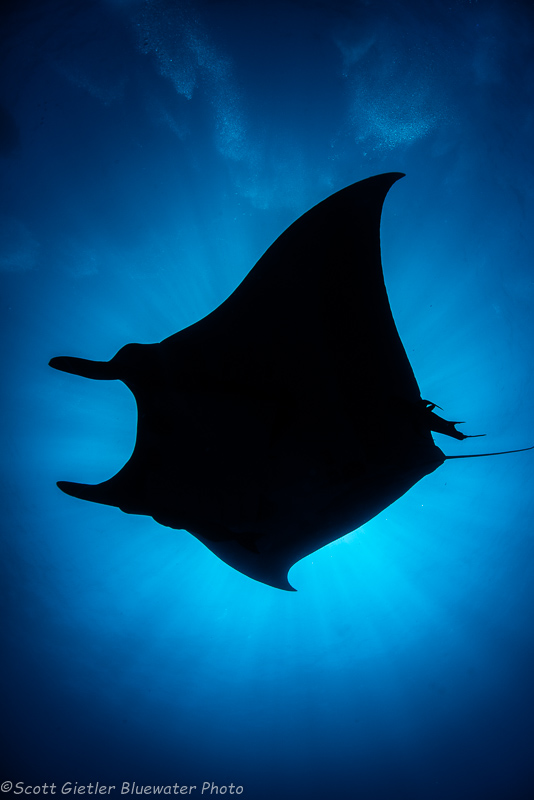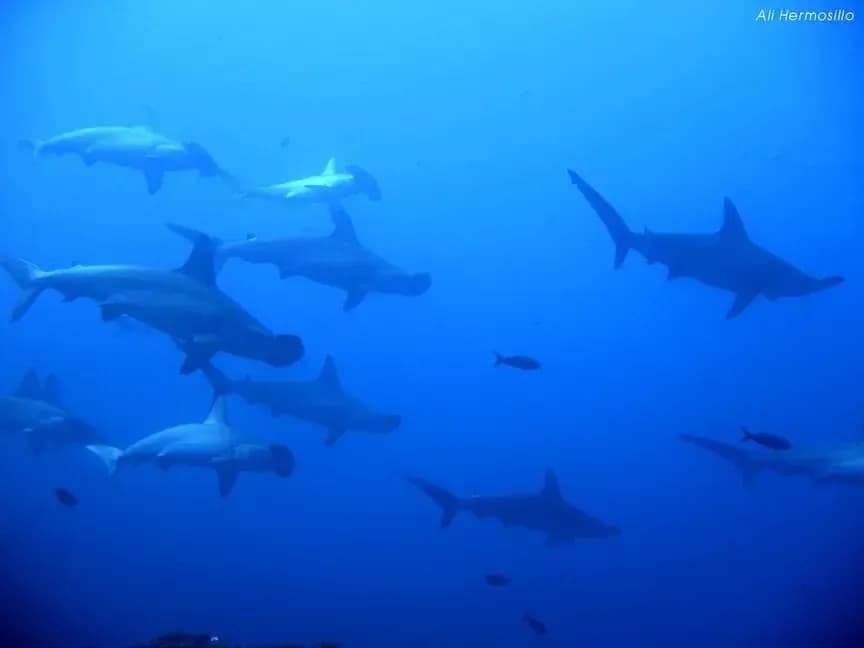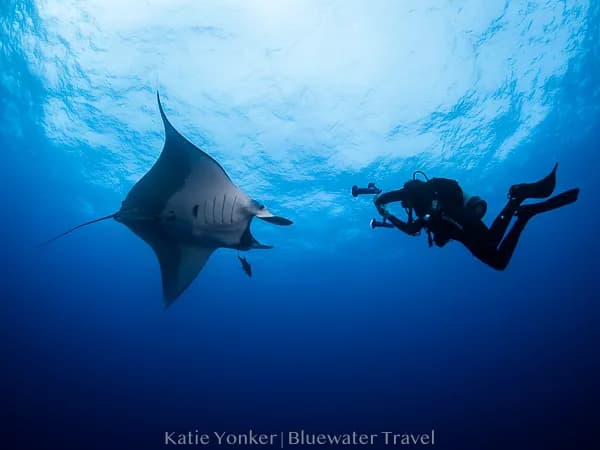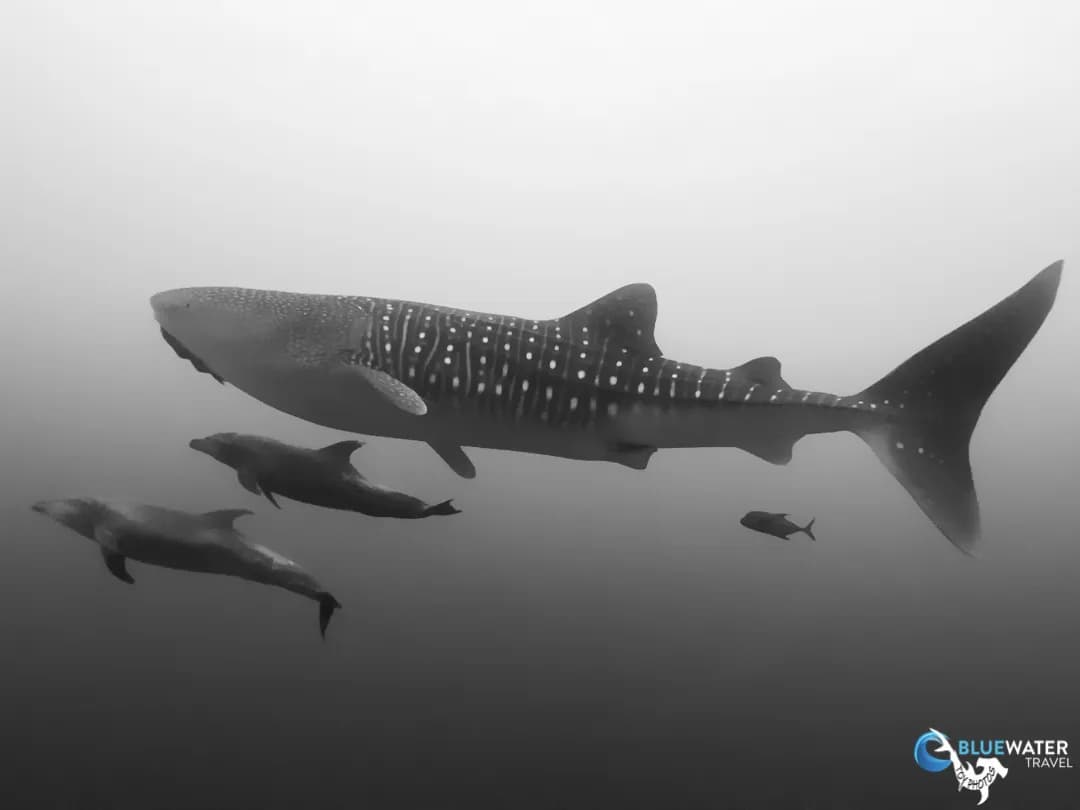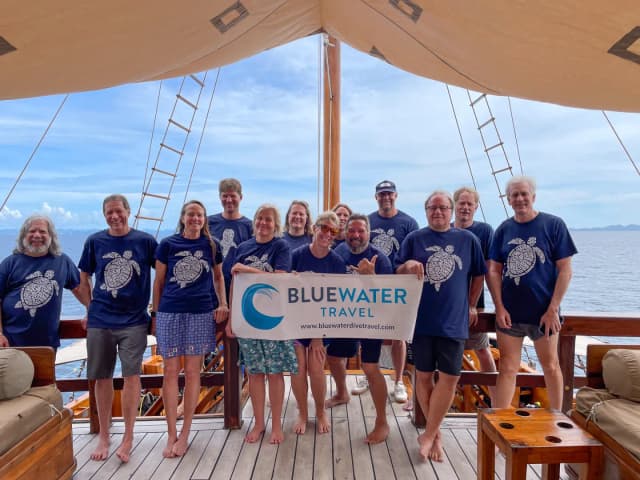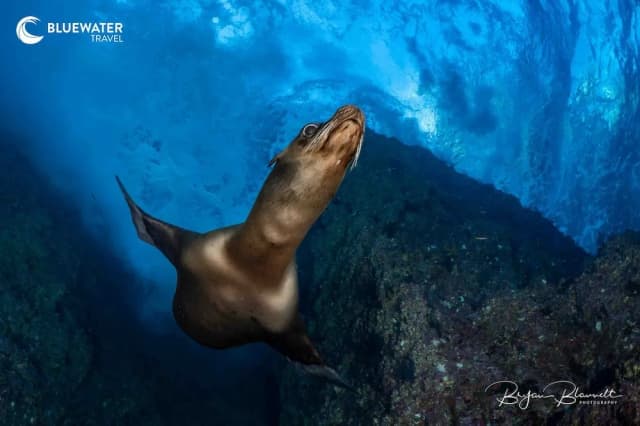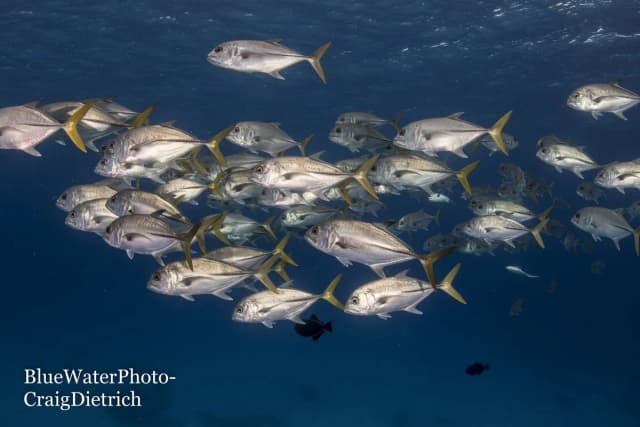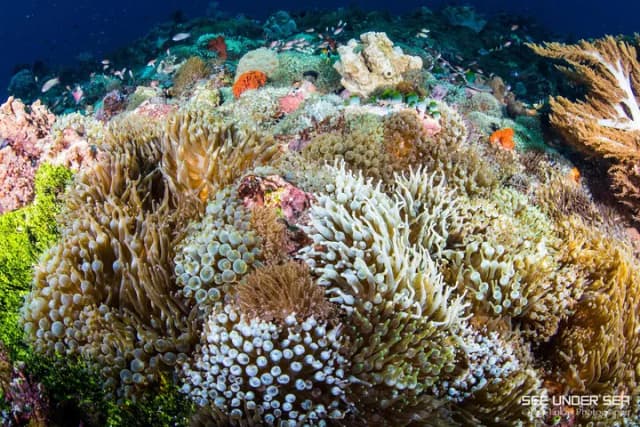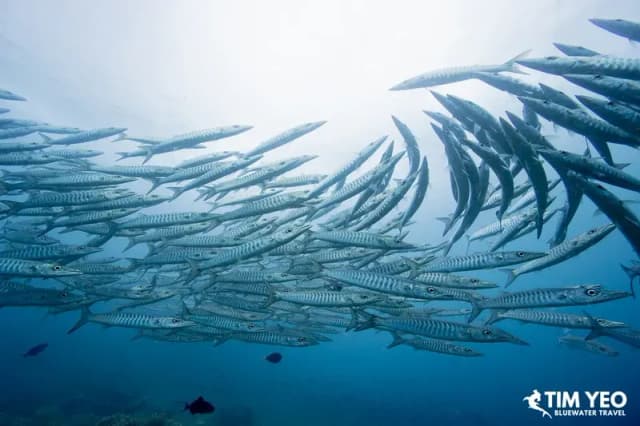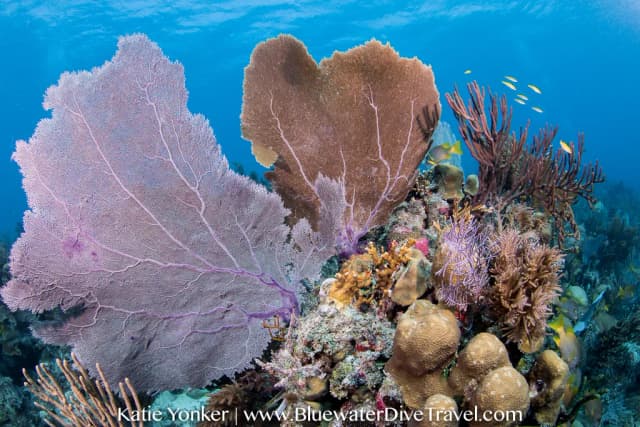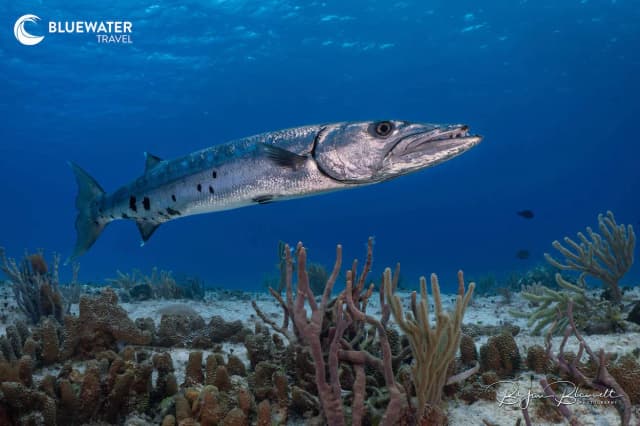Best Manta Ray Diving in the World
Diving with manta rays is an incredible, nearly otherworldly experience for those who have the opportunity to see these graceful, gentle creatures up close. Person after person has described these encounters as sheer joy because there's nothing quite like being in the ocean and having a manta ray swim right up to you and look you in the eye. Luckily there are several places in the world with a high chance of an amazing manta ray encounter - all listed in this article.
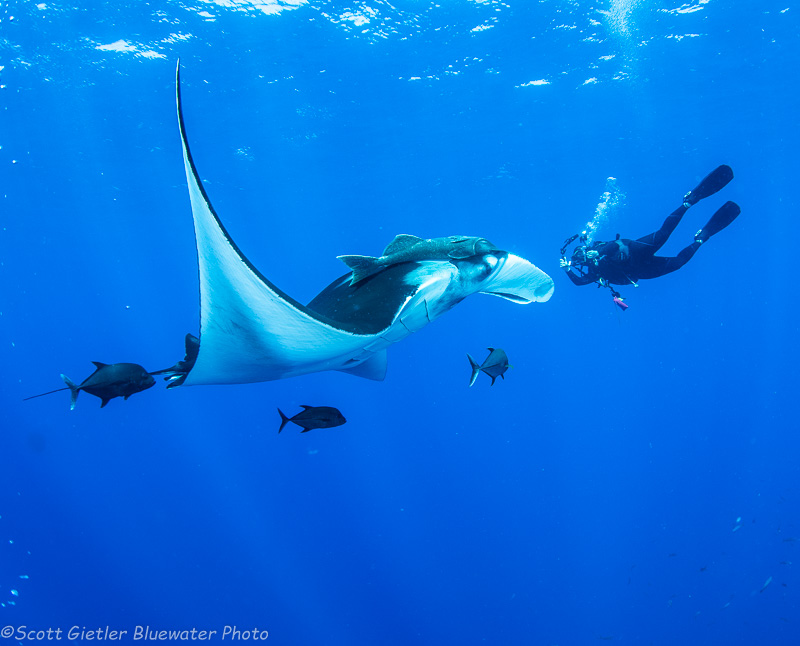
Of the two recognized species of manta, the smaller reef mantas often school in large numbers and are most commonly found on inshore reefs in the Indian Ocean and the South Pacific. The larger giant oceanic mantas are more widely distributed and tend to gather around offshore seamounts and islands. Sadly, both species are listed as vulnerable on the IUCN Red List; however, more countries are starting to recognize the importance of safeguarding these key species. The implementation of protected marine areas benefits the entire local marine ecosystem and improves the underwater experience for visitors hoping to catch a glimpse of a manta ray.
Manta rays have marks that distinguish them along their underside, almost similar to how humans are identified by our fingerprints. Diving or snorkeling with mantas is considered to be the safest large animal encounter in the world since manta rays neither bite nor sting. And manta rays have the biggest brains of all species of fish, causing many to remark about how smart they are. Numerous divers who have experienced diving with mantas have said that they seem to be as curious about people as people are about them, often coming close to take a good look.
Manta rays can be found in many waters around the world, and we at Bluewater Dive Travel have come up with a list of the very best sites, where divers encounter manta rays under the best possible circumstances. For an exceptional diving experience in the Maldives, consider the Fun Azul Maldives liveaboard, offering comfortable accommodations and access to prime manta ray sites.
1. Socorro Island, Mexico
An uninhabited outcrop of islands lying 370 miles west of mainland Mexico, the Revillagigedo Archipelago, commonly referred to as Socorro, experiences the full force of the Pacific Ocean along its isolated coastline. The four islands that make up this UNESCO World Heritage Site are comparable to the Galapagos Islands, and the marine ecosystem is equally rich, offering a refuge for migrating pelagics and resident species alike.
Home Of The Giant Oceanic Mantas
Arguably the best site in the world to interact with oceanic mantas, The Boiler is a submerged pinnacle off the rugged San Benedicto Island, where incredibly friendly mantas gather at cleaning stations to rid themselves of bothersome parasites. These gentle giants are not put off by divers or their bubbles, often gliding only inches away and making for some fantastic photo opportunities.
The Canyon, on the southern side of San Benedicto, is another popular cleaning station for oceanic mantas, and dive groups can often see huge schools circling in the strong currents above.
From November to June each year, the waters around Socorro Island in Mexico are home to over 500 oceanic manta rays (and scores of sharks as well). And, at Socorro, were talking about manta rays that are over 22 feet (7 meters) in width, the Giant Oceanic Mantas.
When you swim with the mantas, youll find sharks, whale sharks, jacks, trevally, and remora alongside you as well, or maybe even a dolphin or two. Mantas move so beautifully that some have called it flight, as suggested by their moving wings, or compared it to a ballet.
As well as mantas, Socorro is known as one of the best shark diving destinations in the world, home to huge numbers of resident Galapagos, silky, hammerhead, and whitetip reef sharks.
When To Visit Socorro
The best months for spotting manta rays are between February and May, with water temperatures hovering around 24-27C (75-81F). Socorro can only be accessed via liveaboard, which only sail to Socorro between November and June. Mantas are there throughout the season.
Skill Level: Best for experienced divers due to choppy seas and often strong currents.
Nearest Airport: Los Cabos International Airport (SJD), Mexico.
Where to Stay: The Socorro islands are uninhabited, so the only way to dive them is by liveaboard, on such excellent boats such as the Quino El Guardian or the Nautilus Gallant Lady. Or, check out our list of liveaboards in Socorro here.
Bluewater founder Scott Gietler, who visited Socorro for the first time early in 2019, called the experience in Socorro "the best manta ray encounters that I have ever had in my life. These friendly manta rays allow you to swim inches away from them, for several minutes at a time. Even though I was so close, at no time ever did a manta ray touch me with its wing, that is how much control that they have. These dives alone are worth the trip to Socorro - they are not easily forgotten, and you will always cherish your moments with the most intelligent fish in the ocean.
Interested in diving with mantas in Socorro? Join our next trips:
Socorro Warm Water Pelagic Trip Nov 2024 | Nov 10 - 19, 2024 | From $3,990
Socorro Manta & Shark Madness Liveaboard Trip Feb 2025| Feb 19 - 28, 2025 | From $4,195
OR view the availability of some of the best liveaboards in Socorro and book online at the best price!
2. Kona, Hawaii
Visiting manta rays on the Kona coast of the Island of Hawaii (aka "the Big Island") is as easy as hopping into a plane and getting there. And no one who visits Kona to see the mantas will ever be disappointed. The mantas at Kona are Reef Mantas, smaller than Socorros Giant Oceanic Mantas, with a width of around 12 feet (3.66 meters). Unlike other mantas, which migrate depending on the time of year, Konas mantas stay in these waters all year long. There are 240 manta rays in Kona, and each one has its own name.
Manta Ray Night Dives
Mantas are found in feeding and cleaning stations. These amazing creatures eat plankton, which gravitate toward bright lights. So when dive operators shine their lights, the plankton comes, followed by the mantas, swimming gracefully with their mouths wide open, essentially letting the current push the plankton to them, at times turning somersaults. Now thats a sight to see. And while they feed, smaller fish come and clean the parasites off their bodies.
Every night they feed at Garden Eel Cove, nicknamed Manta Heaven, in Makako Bay, which is very popular with Konas guests. Visitors have the option of diving in this part of Kona in the daytime or in the evenings, which makes for a pretty special experience.
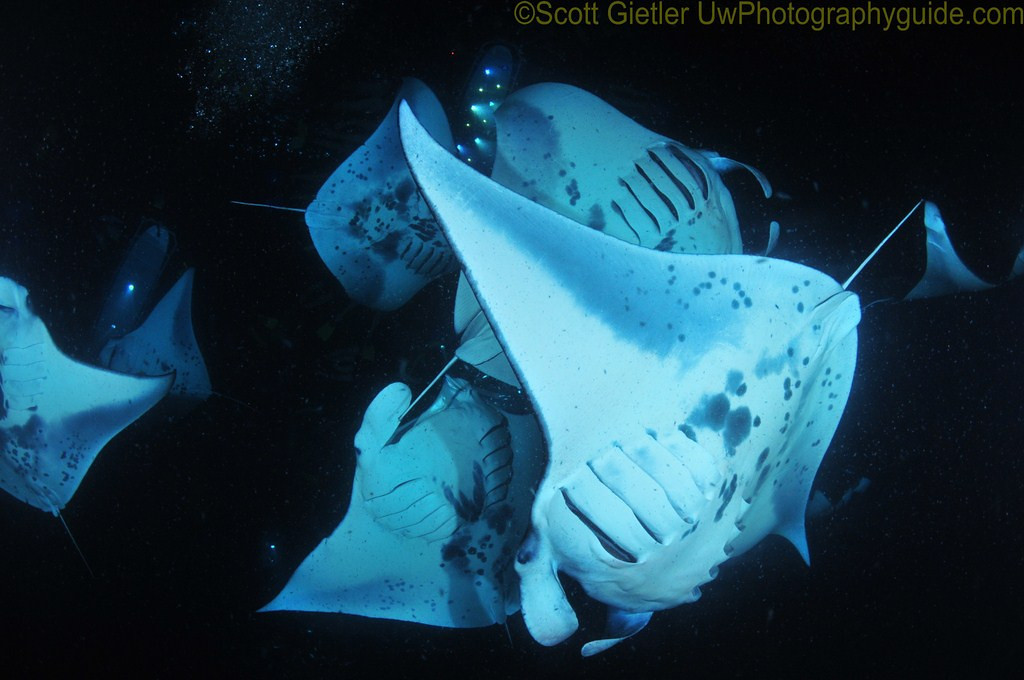
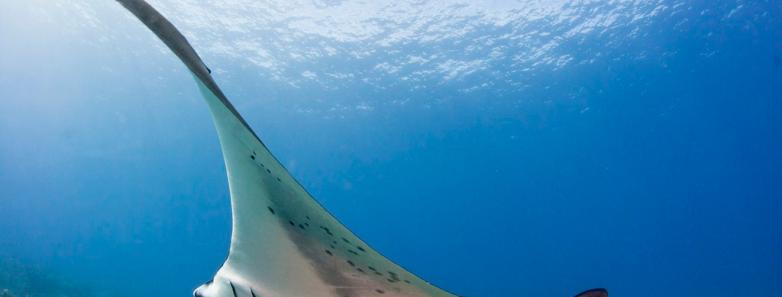
When To Visit Kona
Diving Kona is pretty much year-round, but the waters are calmer and warmer in the summer months, from May through October. Water temperatures range from 70F (21C) through the upper 70s (25 - 26C).
Kona can be dived via the numerous dive operators throughout the island.
Resorts in Kona and other areas of the Big Island abound, and if youre doing the night dive with the mantas, finding accommodations nearby will be no problem.
Find out about other great Hawaiian dive destinations.
3. Komodo, Indonesia
Established as a National Park in 1980 and designated a UNESCO World Heritage Site six years later, the waters around Komodo boast a plethora of marine life flourishing in optimum conditions. The islands southern coastline experiences cool upwellings from the deep Indian Ocean, encouraging brisk currents and a thick plankton soup that feeds all manner of reef species, large and small.
Visit Manta Alley And The Cauldron
Komodo is famous for the Komodo Dragons, of course, but its also well-established as a place where guests can reliably see manta rays -- and here youll see both Reef Mantas and Giant Oceanic Mantas.

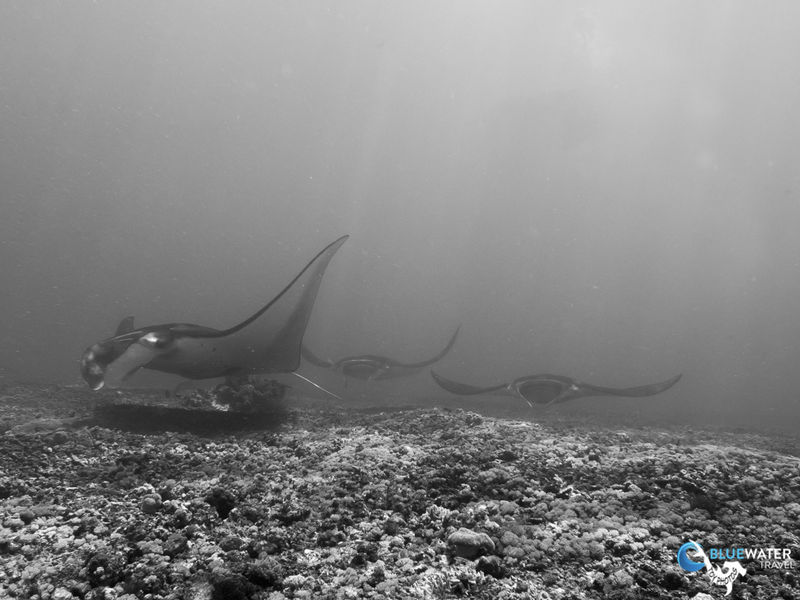
At Manta Point Komodo, locally known as Karang Makassar (Makassar Reef), mantas are the biggest attraction, but its also home to reef sharks, turtles, giant trevally, sponges, and many other fascinating marine life. What brings mantas to this area over and over again are its plankton-filled waters, where the graceful giants come to feed and be cleaned on the regular. Divers have said that encounters with mantas here can last for as long as half an hour.
At iconic sites such as Manta Alley and The Cauldron, dozens can also be seen feeding and visiting shallow water cleaning stations along the reef. Over 200 vibrant coral species and many colorful sponges create a haven for a myriad of bright reef fish, and a spectacular backdrop to the manta rays swooping back and forth.
This area, which is between Komodo and Rinca Islands, is only accessible via liveaboard. Check out BWTs full list of liveaboards and their schedules here.
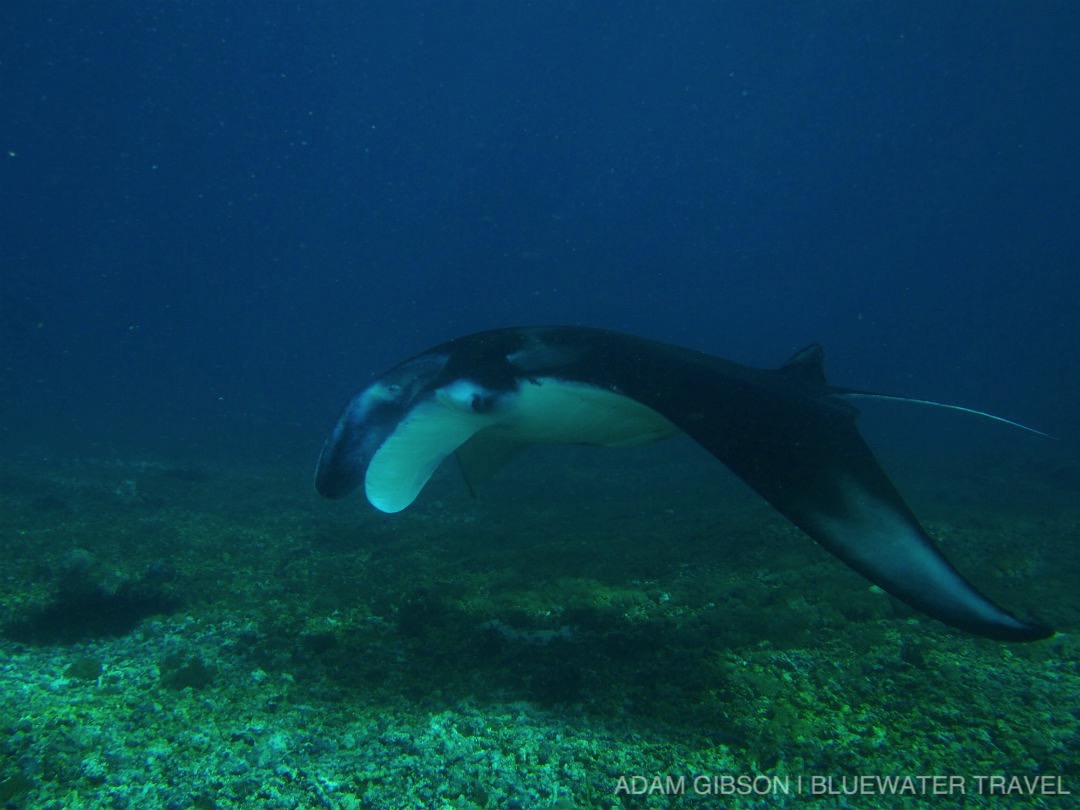
Photo credit: Adam Gibson. Read all about the Bluewater Travel trip to Komodo that Adam led from a few years back.
When To Visit Komodo
While manta rays are found in Komodo from November through May, the best time to visit Komodo is between December and February, when water temperatures hover around 83 - 84 F (28C). The cooler waters and plankton blooms draw the mantas to Komodo during this time. One caveat though: the currents are usually strong in Komodo in these months, and so its best for divers who have their Advanced Open Water Diver certification.
Pro-tip: How to get there -- If youre planning to go to Komodo, youll need to fly in from either Jakarta or Denpasar to Labuan Bajo. Email us at Bluewater Dive Travel and wed be happy to assist you for your Komodo trip.
Komodo can be dived via liveaboard, on the Pearl of Papua or the MV Ambai, for example. Check out our full list of liveaboards here. Or, we can help you by recommending dive resorts such as Komodo Resort and Diving Club, if you prefer a land-based vacation.
4. The Maldives
Spread across 35,000 square miles of sparkling turquoise water and white sandy beaches, nowhere else conjures images of idyllic tropical paradise quite like the Maldives. Lying in the Indian Ocean, southwest of Sri Lanka, the Maldives is an island nation of 26 natural coral atolls known for great reefs and lively currents. Manta rays can be spotted here year-round, however, they do follow the plankton blooms which flourish on different sides of the archipelago depending on the season.
Home Of The Largest Manta Feeding Station In The World
The Maldives, where there are about 5,000 manta rays, is home to the largest manta feeding station in the world, found in tiny Hanifaru Bay in Baa Atoll. The mantas go where the monsoons are since the monsoons affect the supply of plankton. So, for part of the year, mantas abound on the western side of the Maldives, and for the other part, on the eastern side.

From May to November there is an enormous buildup of plankton on the western side, which means the manta rays (and whale sharks) make their way to Hanifaru Bay in droves, to an area no bigger than a football field. At times, there are as many as 150 mantas feeding at the same time.
While diving is no longer permitted in Hanifaru Bay since it was declared a Marine Protected Area in 2009, a limited number of snorkelers are allowed daily, but for only 45 minutes maximum. Any diver whos been here, however, will tell you those 45 minutes are well worth it. There are a number of excellent dive spots around Baa Atoll, however, where mantas can be seen.
Another place in the Maldives to see mantas is South Ari Atoll, also known as Alifu Dhaalu Atoll, on the eastern side of the Maldives.
In the Maldives, tour operators take guests out snorkeling as well as diving to see mantas, and divers can get equally good manta interaction while diving or snorkeling in these waters.



What Is Cyclone Feeding?
The timing has to be right, and it only happens several times each season, but when the lunar tide pushes against the Indian Oceans southwestern monsoon current, it creates a suction effect that pulls deepwater krill and plankton up to the surface of Hanifaru Bay. The krill instinctively head back to depth but get trapped in the bowl of the bay, rapidly building up and thickening the water in a matter of hours. Attracted by the tasty soup, manta rays gather in their hundreds to chain feed, following each other nose to tail in increasingly expanding spirals. Eventually, the chains break down, and a mass-feeding frenzy ensues, with mantas jostling against each other and dozens of whale sharks to filter the last remaining krill.
When To Visit The Maldives
If youre visiting Hanifaru Bay, as mentioned above, plan your trip from the months of May through November, although the peak period would be between late July and October. For South Ari Atoll, which is on the western side of the Maldives, mantas are around from September to October through May, and the best time to see them is between February and April.
Nearest Airport: Velana International Airport (MLE), Male
If youre planning a trip to the Maldives any time, there are plenty of amazing Maldives liveaboards, including Scubaspa,MV Fun Azul, and the Maldives Explorer. However, if youd prefer to stay at a resort, we can help you with this as well.
5. The Galapagos Islands
The Galapagos hosts fifteen different species of rays, including the manta ray. The various types of rays can also be found in different areas around the Galapagos, with giant mantas often found off of Darwin and Wolf islands between Sombrero Chino islet and Santiago Island.
Mantas, Mobulas, And More!
Many believe that the best place to find mantas in the Galapagos is at Cabo (or Cape) Marshall, just south of the equator, off the northeastern shore of Isabela Island. At Cabo Marshall, youll wait among the black coral at a rocky plateau that drops off to over 30 meters (100+ ft), where many of the mantas come and feed. Depending on the time of year, visibility can be between 20 to 70 feet. But thats not all youll see at Cabo Marshall, where mobula rays also happily swim about in massive schools, along with hammerhead sharks, white-tipped reef sharks, pufferfish, and parrotfish, among others.

Cabo Marshall is only accessible via liveaboard, such as the Galapagos Aggressor III and the Galapagos Master. Or, check out our full list of Galapagos liveaboards. Also note that the currents and surge can be quite strong in these waters, and so theyre recommended for Intermediate to Advanced divers.
Read more about BWT owner Scott Gietler's "epic" Galapagos trip.
When To Visit The Galapagos?
Galapagos has its very own manta season, which is between December and May, when water temps are a little warmer, and visibility is better. This is actually the warm season for the Galapagos, when temperatures in the water range between 78 to 84 F (25.5 - 29 C), and so divers with a low tolerance for cold may want to bring their 5mm or 7mm wetsuits.
Join us to dive with mantas in Galapagos on one of our spectacular upcoming group trips!
Galapagos Spectacular Hammerhead, Manta, Mola & Marine Iguana Trip 2024| Apr 25 - May 5, 2024 | Trip Leader: Mark Hatter | From $8,450
Galapagos Spectacular Hammerhead, Manta, Mola & Marine Iguana Trip 2026| May 7 - 17, 2026 | Trip Leader: Mark Strickland| From $10,400
6. Raja Ampat, Indonesia
Indonesia has been a manta ray sanctuary for some years now. In 2015, a nursery was discovered in Wayag, and last year, a new group of mantas was discovered on the remote island of Palu.
Black Mantas Amidst A Manta Ray Sanctuary
The reef mantas at Raja Ampat are distinct from mantas in other areas, as they are dark both on their undersides and on top, which is why theyre called Black Mantas. When theres an abundance of plankton in Raja Ampats waters, Black Mantas can even be seen leaping above the waters surface, taking their ballet into the air and then belly-flopping gracefully.
Raja Ampat is also home to Giant Oceanic Mantas, although there are fewer here than reef mantas.


Some of the best dive spots for reef mantas in these waters are Manta Ridge, Manta Sandy, Eagle Rock and Wayag Lagoon, while at Blue Magic and Magic Mountain, divers will see both types of mantas. At the cleaning stations in these areas, mantas have even been seen lining up to be cleaned!
Read more about Bluewater Travels Raja Ampat 2019 trip led by travel expert Katie Yonker.
When To Visit Raja Ampat
Mantas frequent the waters of Raja Ampat from October through May, but the best time to visit is between December and March, when the waters are the calmest and theres optimum visibility. Water temperatures remain at a consistent 28 to 32 degrees.
Travel with Bluewater on one of our group trips to Raja Ampat in December 2024, February 2025, or February 2026!
Otherwise, check out our list and schedules of liveaboards that dive Raja Ampat, or check out dive resorts in the area like Papua Paradise Eco Resort or Kri Eco Resort. Or, heres where you can find other excellent dive resort choices in Raja Ampat as well.
Join Bluewater's upcoming trips to dive with mantas in Raja Ampat:
11 Night Spectacular Biodiversity Raja Photo Workshop 2024| Dec 9 - 20, 2024 | Trip Leader: Dan Bishop | From $6,300
Supreme LuxuryRaja Ampat Peak Season Liveaboard 2025|February 16 - 27, 2025 | Trip Leader: Mark Strickland |From $7,645
7. Yap, Micronesia
There are only two words to describe Yaps waters-- crystal and clear. Therefore coming to this remote part of the world to see manta rays in their cleaning stations is worth the trip, as visibility can go up to 100 feet (30.45 m)!
Where Mantas Dance
Yap is located between Palau and Guam and is to the east of the Philippines. Its two most famous sites for diving with manta rays are the Miil Channel, where mantas can be found from November through May, and the Goofnuw Channel, for the other months of the year. The Miil Channel is found at the northwest side of Yap Island and is known for the Manta Car Wash, a nickname for the cleaning station in the area. When the waters are warmer, the mantas go over to Goofnuw Channel.
Additionally, many divers have witnessed small groups of mantas dancing in Yap's waters as part of their courtship ritual, especially between October and March.
Many divers have Yaps waters as part of their bucket list because it is home to some of the healthiest barrier reefs in all of the Pacific, replete with walls and caverns, and the opportunity for some amazing twilight diving.
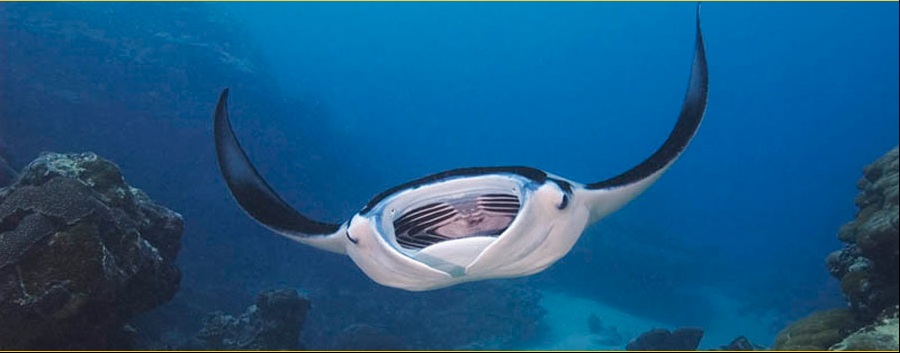
When To Visit Yap
Since manta rays can be seen in Yap pretty much all year round, this makes scheduling a visit easy. But if you want to take a chance on seeing the mantas mating dance, then schedule a trip between October and March. Yaps waters remain in the comfortable 80sF the whole year round.
Yap has a range of resort options, from budget to luxurious, such as Manta Bay Resort and Yap Pacific Dive Resort. Read about Laura's unique trip to Yap from Palau.
Honorable Mentions:
There are a number of other great places in the world where manta rays can be found, but the BWT team has three, in particular, that deserve special mention.
Tubbataha Reefs National Park, Palawan, the Philippines--as part of the Coral Triangle with its incredible biodiversity, Tubbataha is home to reef mantas, an exciting (and recent!) discovery.
German Channel, Palau--Mantas also regularly visit the German Channel in Palau, where there are a number of cleaning stations where small groups of mantas gather. Often, when theyre done getting cleaned and they see divers, they are known to swim quite close
La Paz, Mexico--This area has become famous for its mini-mantas the manta rays smaller cousins. Joining a night dive to see dozens of Mobula rays is simply unforgettable.
Similan Islands, Thailand--Between December and April each year, manta rays stop-off on their migration to feed in the Andaman Seas plankton-rich waters.
Bali, Indonesia --The manta rays around Bali's Nusa Penida are huge! They are reliably spotted at cleaning stations, sometimes in droves. If conditions allow, the mantas can be visited by both divers and snorkelers.
Costa Rica -- Massive Pacific manta rays can be found at the Bat Islands, Catalina Islands, and Cano Island along Costa Rica's Pacific Coast.
Mozambique - An overall fantastic destination for large animal encounters, Mozambique is home to robust manta populations. Come for the mantas and stay for humpbacks, whale sharks, a variety of sharks, and dolphins.
Book Your Next Dive Trip
If you're looking for that 'next big trip' - hopefully, this list ofthe world's best coral reefshas helped either add some new ones or help prioritize your list! If you have any questions on any of the above locations, or any others, please let us know and our travel advisors would be happy to help!
Bluewater Travel can book youon any of the group trips that we have listed above, or help arrange a trip just for you! We'll provide recommendations andget you booked on any boat or resort, help sort out your flights, transfers, and just about everything else you need to have an amazing trip--all that atno additional cost than doing it all yourself.
Email us, call us at +1-310-915-6677 or write to us throughthe live chat box to start planning your trip!
Further Reading
Check out these useful resources from our sister websites, Bluewater Photo and Underwater Photography Guide
Wet Wide Angle Lens Buyer's Guide
Best Underwater Cameras (2019)
